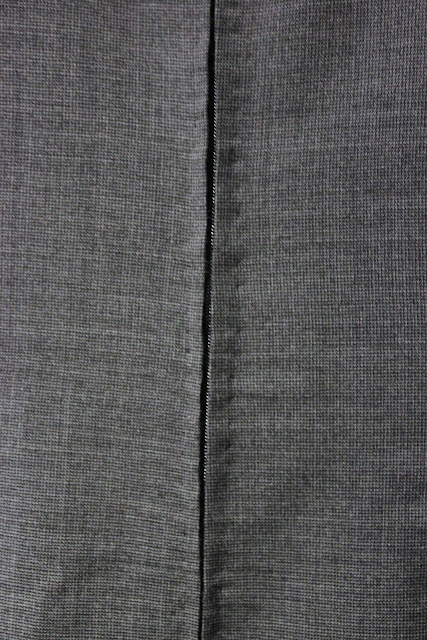As I discussed in the
post about my SewCieTea dress, I wore a crinoline underneath it. Rather than buy a crinoline, I spent a couple of days making one over the Easter weekend.
I made plans to make it at two consecutive
Social Sewing Days. Well,
you know why it didn't happen in Feb, and it didn't happen in March because a discussion led to a whole heap of people telling me that I "couldn't make it with that soft tulle, it won't have enough body" and telling me to buy the icky stiff scratchy tulle.
Well after going into a bit of a huff (there may have been a tiny foot stamp), I did some research on the internet. And after reading heaps of tutorials and closely examining lots of pictures of crinolines I decided that I was willing to give it a go with the soft tulle. In particular I fell in love with the look of the
above crinolines that I found on etsy, which looked like they only had stiff tulle as one of the layer at the bottom of the crinoline, and the rest was a much softer tulle (or some other kind of fabric).
Emboldened by this I bought 1.5m of the soft tulle from GJs in a cream colour and got planning (the tulle was ~2.7m wide, so 1.5m was a LOT of tulle). Rather than make the whole thing from tulle I decided to do the top section in batiste (the same as I underlined the dress with), and then add two tiers of tulle to the bottom. As I wanted my crinoline to be about 20" long (as the skirts on my dresses are 21-22.5" long) I divided that up as 10" for the top section, and 5" for the two bottom teirs.
I settled on these proportions because I wanted the fullness from the tulle to start around about the fullest part of my hips, which was just over 10" from my waist, to give the nice smooth triangular silhouette but without adding extra bulk unnecessarily.
The top part of the crinoline is actually based on the basic skirt block that I made in my pattern-making classes. I did this rather than just use a rectangle because of how skirts often sit higher at the back than the front on me. In my basic skirt block we had added some extra fabric horizontally over the bum so that the 'hip balance line' was parallel to the floor (and therefore also the hem). Having this hip balance line meant that I could just chop the block off at that hip balance line and know that if I added equal width strips to the bottom of it they would still stay parallel to the floor. Does that make sense?
As the skirt block was straight down and slightly fitted, I added some extra ease at the centre front and centre back and gathered it onto an elasticated waistband
Next I prepared the 'rings' of tulle that would be gathered on into tiers. I measured the bottom of the top panel, and discovered that it was about 1/2 the width of the tulle. The first tier of tulle was 1.5 widths worth, and the bottom tier 4 widths worth. So the ratio I ended up with was 1:3:8.
I joined the strips with french seams, and then gathered the tulle using the fantastic dental floss method. Here is a pic of me using the same method on my
Summertime Cambie:
To gather using dental floss, you just need to stitch a zig-zag stitch over the dental floss, and then pull on the dental floss to create the gathers. I stitched my zig-zag at about 4mm wide
To assemble the crinoline I started by gathering the bottom tier of tulle onto the upper tier. I stitched the two layers together by laying the gathered upper edge of the lower tier on top of the bottom edge of the upper tier, overlapping them by about 1.5cm, matching up at key spots, pulled the floss to make them the same length, and stitched over the line of dental floss (which got left in the crinoline, minty fresh petticoat!)
Then I gathered the top of the upper teir, and this one I stitched like a normal seam, aligning the raw edges, stitching and then opening it out. Again I left the dental floss in the seam.
I then created a second set of two tiers of tulle, stitched them together and stitched them onto the crinoline on top of the first layer. I didn't want to gather the two layers together as I thought that might create more bulk than gathering them separately. I stitched them on separately as it was easier than stressing about keeping all three layers from moving, I only had to worry about two at any time.

I added elastic to the casing at the top, but I also added some buttonholes, so if I want to replace/supplement the elastic with a drawstring in the future I can, however I placed the buttonholes at the back of the crinoline, as I figured I'd prefer to have a drawstring tied at the back rather than the front.

*Gasp!* me in my underthings! The up side of using batiste for the top of the crinoline is that it isn't transparent like the tulle, so I can show you what the crinoline looks like without you seeing through it! As you can see, the above picture shows you what the crinoline looks like without the skirt/dress over the top.

Hopefully this information has been of use to you if you're considering making a crinoline of your own. I'm glad I made mine, as it didn't cost much in materials, and didn't take as long as I was expecting (Even though at the time those lines of stitching for the gathering felt like they were taking FOR EVAR).






























































